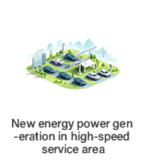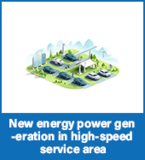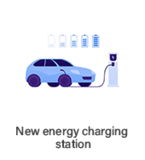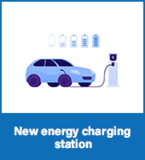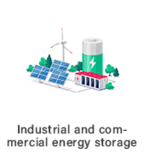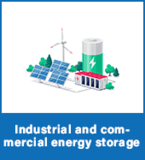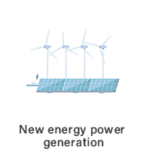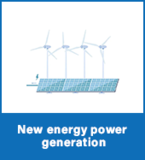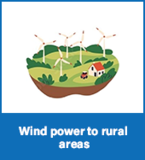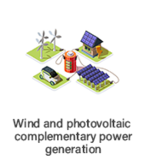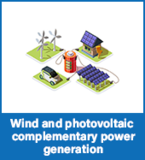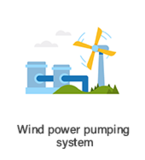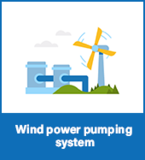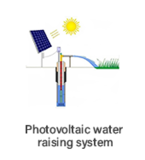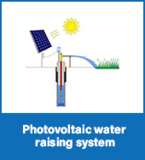WIND POWER TO RURAL AREAS
Project Overview:
With the continuous promotion of the rural revitalization strategy and the high attention paid to the development of green energy by the country, wind power going to the countryside has become an important way to achieve rural electrification and promote green and low-carbon transformation. This comprehensive solution for wind power to rural areas aims to respond to national policies, meet the growing electricity demand in rural areas through the rational layout of wind power projects, and promote the green development of rural economy, achieving sustainable development goals.
Project background and objectives:
一、Project Background
The demand for electricity in rural areas continues to grow, putting pressure on traditional energy supply methods.
The country encourages the development of new energy, especially the application of renewable energy such as wind power in rural areas.
Rural areas have abundant wind energy resources and favorable conditions for the development of wind power projects.
二、Technical route
Relieve the electricity shortage in rural areas and improve the reliability and stability of power supply.
Promote the development of green energy in rural areas, reduce carbon emissions, and improve environmental quality.
Promote the transformation and upgrading of rural economy, increase farmers' income, and enhance the sustainable development capacity of rural areas.
Solution Overview:
一、Site selection and planning of wind power projects
Based on the distribution of wind energy resources in rural areas, conduct scientific site selection to ensure the economic and feasibility of wind power projects.
Develop a planning scheme for wind power projects, specifying key elements such as project construction scale, layout, and equipment selection.
二、Wind power project construction and operation
Organize a professional construction team to carry out wind power project construction, ensuring that the project quality meets national and industry standards.
Introduce advanced wind power operation and maintenance management system to improve the operational efficiency and maintenance level of wind power equipment.
三、Grid access and power consumption
Strengthen the connection and interconnection between wind power projects and rural power grids, ensuring that wind power can be smoothly connected to the grid and efficiently consumed. Promote the transformation and upgrading of rural power grids, and improve their ability to accept new energy sources such as wind power.
四、Energy storage and multi energy complementarity
Consider introducing energy storage technology into wind power projects to balance the intermittency and volatility of wind power and improve power supply reliability.
Explore multi energy complementary models between wind power and other renewable energy sources (such as solar energy) as well as traditional energy sources, optimize energy structure, and improve energy utilization efficiency.
五、Social participation and benefit sharing
Encourage rural residents to participate in wind power project construction and increase farmers' income through land leasing, labor cooperation, and other means.
Establish a profit distribution mechanism for wind power projects to ensure that rural communities can share the economic benefits brought by wind power projects.
Implementation steps:
1. Preliminary research and planning:
Conduct detailed research on wind energy resources, electricity demand, and power grid conditions in rural areas.
Develop a comprehensive solution plan for wind power to rural areas, clarify project goals, tasks, and implementation paths.
2. Project approval and filing:
Complete project approval and filing procedures in accordance with relevant national and local policies and requirements.
3. Fundraising and Investment:
Raise project funds through various means such as government subsidies, bank loans, and social capital cooperation.
Gradually invest funds according to the project implementation plan to ensure the smooth progress of the project.
4. Project construction and operation:
Organize a professional construction team to carry out wind power project construction, ensuring project quality and safety.
Introduce a professional operation and maintenance team to manage wind power project operations and ensure efficient equipment operation.
5. Effect evaluation and continuous optimization:
Regularly evaluate the implementation effectiveness of the project, including economic benefits, environmental benefits, and social benefits.
Continuously optimize the project implementation plan based on the evaluation results to improve the overall efficiency of the project.
Expected effect:
1. Meeting the electricity demand in rural areas: The wind power to rural areas project will effectively alleviate the electricity shortage in rural areas and improve the reliability and stability of power supply.
2. Promoting green and low-carbon development: By utilizing renewable energy sources such as wind power, rural areas can reduce their reliance on traditional energy sources, lower carbon emissions, and improve environmental quality.
3. Promoting the transformation and upgrading of rural economy: The wind power to rural areas project will drive the development of related industries in rural areas, increase farmers' income, and enhance the sustainable development capacity of rural areas.



